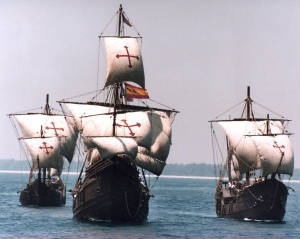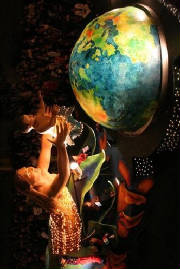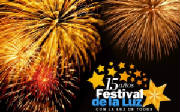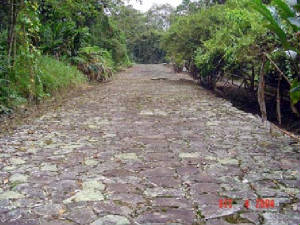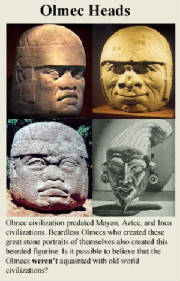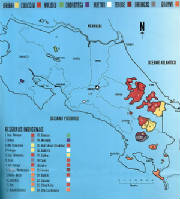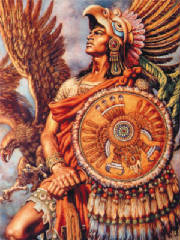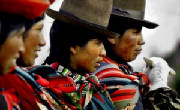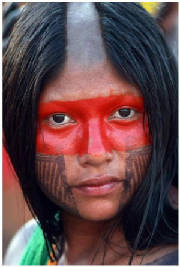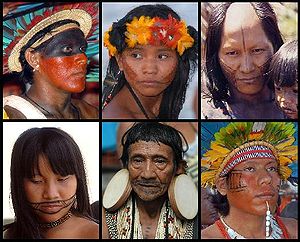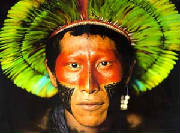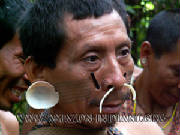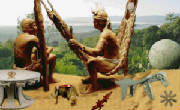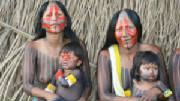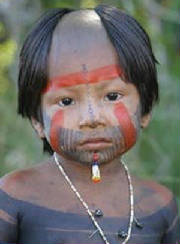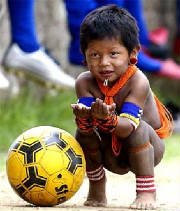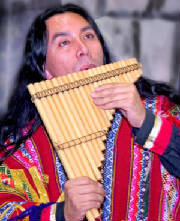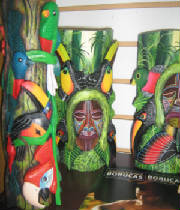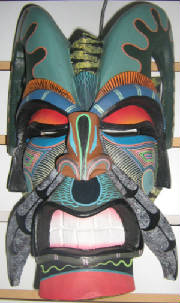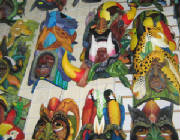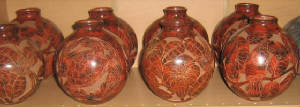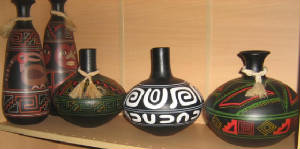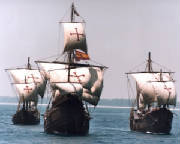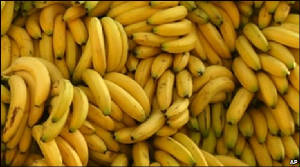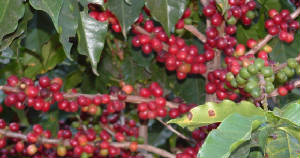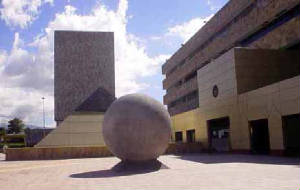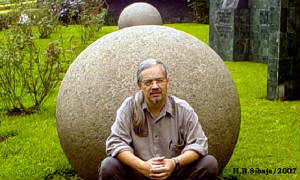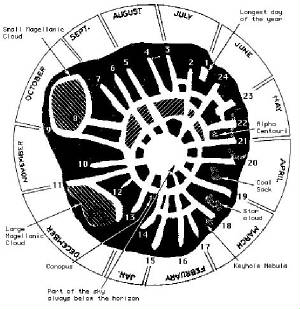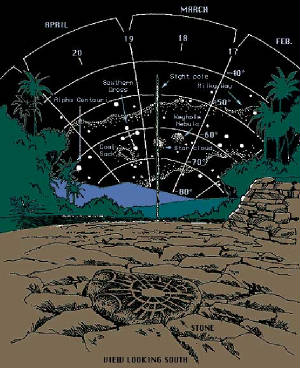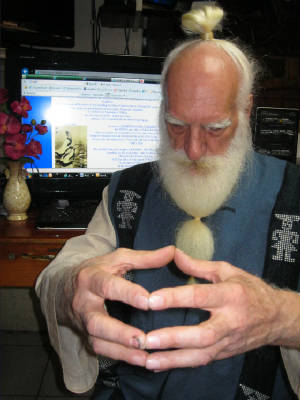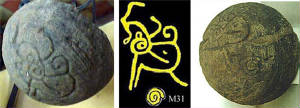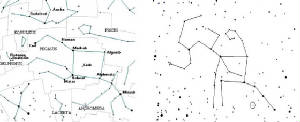|
our cosmos is life's creation |
|
|
39 - History of the Ticos To me the blue banner heading on top of this page presents “Chupícuaro el
lugar azulado, que son hogares de nuestro dios viviente Sibú auras
de seres vivos celestiales”.
.
BRIEF
REVIEW OF THE CURRENT INDIGENOUS Tico Tribes. In
Costa Rica eight indigenous groups have been identified. 1. Originally known by a klan name "Sibowak" the klan of sibo,
the living god. Today they are distributed in 21 reserves that cover a surface area of 320.888 hectares and in which more than thirty
thousand indigenous natives remained and still live today, oblivious of their ancestral heritage. The rest have adapted
to modern life and live in the central valley
as can be seen in this night image above during
a light festival in San Jose.
2. We can not mention Costa Rica without mentioning our anual light
festival every solar year's end. A
Festival too inner light. entering the
era of light insight and visión in the year 2012 And there will be light because we are the children of light . Click on the
images to updated info
3.
After the big charla the village elders came to the conclusion "If man is not busy, creative, or working, he
start a fighting with his brothers" So they convinced the Cacique, to make paved roads to the public places. to do community
service for your daily meals and shelter as a group doing
a specialized task in the villages. communal
planting, preparing, making, building is progress the
waste disposal, water treatment and recycling. To work
brings peace, is a tribal fact To become a creator
4. Culture is
the invisible force that makes things to happen and become true. a frame of mind, is the directional force, just like religion it is a life force that does not hold by the universal laws. Life makes his own laws. Like, "anything can be moved" together we act as one, or "anything you can imagine, or dream, is possible - just make it happen" But remember, above all, it is the one and only life we share and if you see something wrong - do not wait for some one else to make
it right
|
|||||||||||||||||||||||||||||||||||||||||||
|
5. The
aboriginal population of Costa Rica has its origins in two geographic regions of great cultural influenc.
The Mesoamerican region: With influences from the aztec, olmec and maya cultures. Its spacial
expanse is located in the northeast of Costa Rica. (Guanacaste). Its aboriginal settlers cultivated mainly corn, beans, pumpkin
and cotton. They can be distinguished from other groups through their artwork in ceramic, jade, stone and objects
of gold.
The soft voices of the woman controlled village affairs, the food, distribution
of work, and who goes with whom. Mel Gibson's Apocalypse is a fairly good depiction of character and daily life
The same people who turned their backs
on the ships, by native instinct,
they knew. People
just like me, who
prefer the life in harmony with nature who prefer to be surounded by nature and shy away from other people Just like the feline specie
Even after more than 500 years of conquest and colonization,
different indigenous groups have survived in our territory that have conserved their ancestral culture, language and customs. It is mainly the Talamancan Indians who, even today after five centuries, still resist
“culturization” and proclaim.
They maintain a very complex kinship system of matrilineal clans, sometimes
popularly called uterine
descent. your mother is first of all, and your
only friend to obey, defend, and care for her when
she is old
The population was reduced by a century of conquista in a 97%. Now
four centuries later, only 0.25% survive. Intentional genocide or not, it was a biological warfare, one that ended
with a splendid culture, whose values and human face just began to hear scarce evidence.
CABECARESAre located on both sides of the Talamanca mountain range toward the Atlantic and the Pacific. This group is one of the most preserved and numerous in the country, with an authentic ethnic identity and with the least altered habitat. The Cabécares are simple, timid and very hospitable Indians, dedicated to agriculture, hunting and fishing activities. They maintain a very complex kinship system of matrilineal clans that they share with the Bribrí. They live in huts with straw roofs and sleep in hammocks. They profess a belief in their god Sibö.
BRIBRIS Also located on both sides of the Talamanca mountain range,
the Bribrí form an immense indigenous group that has dispersed in the big valleys and mountains in the provinces of
Limón and Puntarenas. They share the God and power structure of the Cabécares. Many scholars have considered
the Bribrís and Cabécares to be one single ethnic group. The Bribrís are generally bilingual; they speak
perfect Spanish and Bribrí. Many Bribrís have taken up the conveniences of our civilization, (radio and television)
however others still live in the mountains in Indian ranches with conical structures.
BRUNCAS OR BORUCASLocated in Buenos Aires of Puntarenas on two reserves: Boruca and Curré. In spite of the fact that their lands were radically diminished by Spanish colonizers, the Borucas, different from the majority of the other groups, were never removed from their original lands. The Borucas were hardened and courageous Indians. They attacked the Spanish on the roads wearing masks made of balsa wood. Their native language, Brunca, is known today only by elders and is being inexorably lost due to the fact that long ago Catholic missionaries prohibited them, under severe punishment, to communicate in their own language.GUAYMIESLocated in the south Pacific of the national territory in the border zone of Costa Rica-Panama. The Guaymí population in our country comes from the mountainous zones in the northern part of Panama. They speak Guaymí and very little Spanish. Religious missionaries such as the Catholic, Bahai, Jehovah’s Witness, Evangelists, etc. have contaminated the Guaymí’s own beliefs to such a point that it is impossible to have them define their religious concepts, except the clinging to their native god NABU.
CHOROTEGASTheir splendor having been wiped out by the conquest, the Chorotegas have been reduced to a small settlement on the Matambú indigenous reserve, located between the cantons of Hojancha and Nicoya in the province of Guanacaste. They are potters descended from an excellent tradition whose ancient art fill the display cases of our museums.TERIBESImmigrants from Panamanian lands, they are located close to the southern border in Yorkin and Sixaola. The Teribes live in mountainous places with difficult access. They have conserved their language and engage in hunting and fishing. Ethnographic studies incorporate these indigenous people into the Talamancan groups"When we look at the work of makers of pre-Hispanic areas, we can see
through it the development of skills and technology, unprecedented in the ancient world: The sculpture of granite to a spherical
shape, with a close tolerance of perfection."
"The enormous work that led to the carving, chopping, grinding and mobilization of large and heavy granite masses, causes a deep admiration and total respect for their makers, who had an undeniable ability to make such an unusual task, equipped with only Neolithic tools , plant materials and an unwavering purpose. "
The conquest of Costa Rica. began in 1522 from the Pacific Ocean and
entered land in Nicaragua, former landowners on the peninsula of Nicoya, then continued to sow death, destruction and slavery
by traveling to the province of Cartago. Inter
American routes. Only
recently here in Costa Rica has been rediscovered an extensive web of trails that cover thousands of Kilometers of stone
paved roads, up to ten meters wide and 75cms thick for heavy trafic today. These ancient roadways passing through the current
national territory from border to border, with side roads to popular gathering places, waterfalls, Warm termal bathes still
in use today..
|
Yes, now we are a
third world banana republic. But, now we have more teachers than soldiers,
and
still, no arms. Our sport is football nothing better for national pride than sports. like handling a ball - it is speed and agility
in every sense, that realy count, as worth admiration was never for brute force, or the bully so, if they turn
their backs on you you know why you do not belong to their team Because - together we are the strongest
There might be stone spheres in other areas around the world, but I can asure
you, not older, not bigger, nor as many, or as beautiful and perfect as ours. And no
coffee better than ours. National Pride.
Time was tied to the heavenly bodies. And they made paintings on large wet stone spheres. Representing
the night sky on the inside of a larger bubble. Tracing the trajectory of the heavenly bodies on the wet rock face. Just like the reflexion of a convex mirror. Consider parallax do not exist, on this scale you can get it right down to
0.01mm. a few minutes in 5000yrs.
First the sun and the moon - to mark the planting seasons. The water shows the imperfections, years go by, they keep working on it every day to make them perfectly round and shiny, with a water savila mix it remain wet all night long. The stars mirrored on the inside what happened out there. Rolling the stone ball, imitate the movements of the heavenly bodies. If
you rol it forward you go ahead in time. Time to plant, time to harvest the gifts
from Sura smiling on you The year of 24 months comes to another end. That very day is always marked by the Sun. Called
the summer solstice for us here now. December 22 every year.
The wise old sages have always predicted Present
time era comes to an end in the year 2012. A new era of
light, insight and vision continue now. The era of our cosmos Idréa That
is, if man is ready to go. The Living moved their first Heavenly body from its set course. To
change the course of earth's destiny to doom. we are free at last, to
take control of our Cosmos "Helios" now. Move ahead in Cosmic
Time, where LIFE is the center of it all. (simbolic) Petro glyphs indicate territorial and astronomic maps - Night Skies valid to this day with indications of the Planting seasons.
Petro glyphs of astronomic constellations
with local significance. Please
take note M31 the Andromeda Galaxy – How did they knew it was a galaxy.???
This is a modern map of the constelation of
Pegasues and the position of Andromeda M31. |
||||||||||||||||||||||||||||||||||||||||||
|
Click on the buttons below for other pages . . .
|
|||||||||||||||||||||||||||||||||||||||||||

























































